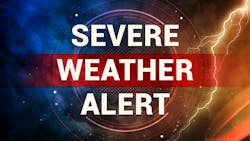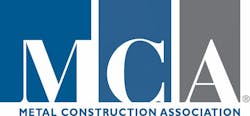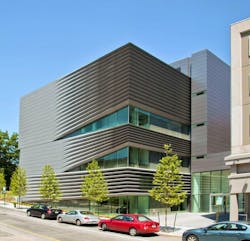A developer or building owner has many considerations when selecting building materials, including design aesthetics, sustainability, energy efficiency, and maintenance costs. And with today’s increasingly extreme weather events, durability and resiliency are becoming top priorities. In hurricane and fire-prone areas of the country, resiliency may be the most crucial factor.
As a highly durable and long-lasting material, metal roofs and wall panels offer an excellent choice for protecting an owner’s investment in the long term, even when disaster strikes. There is no compromise. Metal also allows for design freedom, low maintenance, sustainability, and reduced installation costs.
Built to Withstand Nature’s Worst.
Extreme weather, including hurricanes and wildfires, has increased the significance of durability in building design. To enhance its durability and lifespan, a building must be designed to protect its occupants from various hazards, including fire, water, high winds, severe storms, and, in certain regions, hurricanes and tornadoes. Resiliency, however, is more than occupant protection and long life. It also includes minimal loss of building function after the event.
Metal provides numerous advantages for preserving a building against natural disasters. Metal panels can provide completely noncombustible surfaces, superior strength, ductility, and the ability to resist corrosion and mold growth.
Fire
Wildfires are called wild for a reason: they are often uncontrollable, notes the Insurance Institute for Business & Home Safety (IBHS). According to IBHS, what can be controlled is the preparation undertaken through design and maintenance to protect a structure from damage and losses when a wildfire threatens. Ultimately, the difference between survival and destruction is whether some part of the building catches on fire.
There are two parts to the ignition process. The most vulnerable part of your structure is your roof. If you have a combustible roof, almost anything else you do will be of little consequence in reducing the chances that the structure will burn when a wildfire approaches.
Other key risk factors include vents that can allow embers from fire to enter the attic, fences, decks and vegetation that can ignite and bring a fire right up to the building, single-pane windows that can shatter and permit flames and embers inside, and debris that accumulates in gutters and in various locations along the roof and wall lines. When metal wall and roof panels are free from debris, sparks that reach the structure will neither create a blaze nor spread flames. Using ember-resistant vents and designing the roof with minimal overhang can prevent the structure from channeling hot air, while using fire-resistant materials for soffits, decks, and balconies further reduces the potential for fire.
High Wind Events
Metal roofing is highly resilient to wind events and can endure high winds without sacrificing durability. Metal panel roofs are tested more rigorously than shingles, and the test subjects the deck to load as well as the panels. Because of this, metal panel roofs are rated for pressure instead of wind speed. Many of these systems will support a safe working load of 60-80 psf. This equates to roughly 140 mph under current codes, making them ideal for hurricane-prone regions. In contrast, standard asphalt shingles are usually rated to 110 mph, which is a measure of horizontal velocity, not the resulting uplift pressure. Winds this high could easily load the deck well beyond the shingle rating and suck the deck right off the trusses and rafters.
The superior wind resistance of metal roofs can be attributed to their design and construction. The overlapping panels interlock on all four sides, leaving little room for hurricane-force winds to penetrate under the materials and cause uplift.
Additionally, the adhesives used to bond shingles and tiles may degrade significantly over time in areas exposed to heat, rain, wind, and strong UV rays. In contrast, metal panels are securely locked into place and will not deteriorate as quickly as other materials.
A metal roof also offers protection against hail, wind-driven rain, and storm debris. Many metal roofs carry a Class 4 Impact Resistance rating. Assigned by Underwriters Laboratories (UL), Class 4 is the highest category for impact resistance.
Floods
In flood events, metal frames and panels are not susceptible to damage from water. Unlike other materials, water infiltration does not cause warping, mold, rot, or other forms of degradation in metal components. Furthermore, the paint on steel panels is applied in such a way that it lasts nearly as long as the metal itself, which is typically a lifetime. You don’t need to repaint metal panels after a flood because the paint goes beyond surface depth.
After flooding, structures with metal roofs have become a popular replacement choice because they are so effective in resisting damage from moisture.
Summary
When choosing a material, developers must consider whether the building materials possess the qualities needed to meet the realities and demands of the construction. Metal has come under scrutiny and based on a thorough evaluation of its short- and long-term advantages, product life, environmental impacts, resilience, and durability—even in the face of disasters—it has demonstrated its value.
Metal is durable, even when confronted with nature’s fury. Constructing with metal offers greater durability and better resistance to high winds, hurricanes, and wildfires compared to other building systems. In short, metal has proven its mettle.
Learn more about metal construction at metalconstruction.org.


